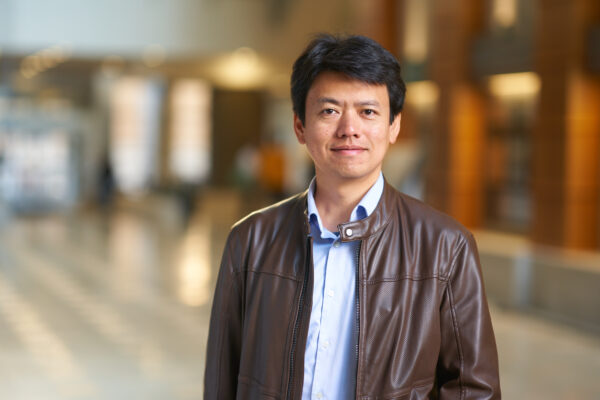News
Whitehall Foundation grant to help fuel Huang’s latest research
Cheng Huang, PhD, has won a Whitehall Foundation grant to study the neural mechanisms of prediction using Drosophila (fruit flies) as a powerful model to understand analogous processes in the human brain.
Franken awarded Young Investigator Grant from BBRF
Tom Franken, MD, PhD, has received a Young Investigator Grant from the Brain & Behavior Research Foundation (BBRF) to fund a new direction in his research on the neural mechanisms of perception.
Dhanerawala earns American Heart Association fellowship
Zahra Dhanerawala, an MD/PhD student in the lab of Edward Han, PhD, was awarded an American Heart Association (AHA) Predoctoral Fellowship to further her research into the connection between the hippocampus and memory.
Publications
Case report shows how fluoxetine (Prozac) was repurposed to treat a severe seizure disorder in two sisters under treatment at WashU Medicine
In Frontiers in Pharmacology, Lawrence Salkoff, PhD, and colleagues report how norfluoxetine, a long-lasting metabolite of fluoxetine that may accumulate in the brain at greater concentrations than fluoxetine itself in patients treated with fluoxetine, is most likely the agent bringing relief to the patients.
![Figure 2. Diagram of a Kv3 potassium channel subunit and the location of the V473A variant. (A) Kv3 subunit with 6 transmembrane domains. P indicates the pore domain governing the ion selectivity of the channel. The colored filled circles in S6 represent selected dominant gain-of-function variants in Kv3.1 and Kv3.2. The KV3.2 V473A variant is located near the cytoplasmic opening of the channel pore (red). Kv3.1 variants: 1) V425M, 3) M430I, 4) V432M, 5) V434L (Ambrosino et al., 2023); KV3.2 variants: 2) I465V, 6) V471L (Li et al., 2022; Schwarz et al., 2022), 7) V473A (Schwarz et al., 2022) (which is the topic of this study). (B) Position of WT V473 and V473A variant on S6 in the Kv3.2 channel structure. The WT V473 (red) is located near the cytoplasmic mouth of the channel and may be important in stabilizing the closed structure (left image). The variant V473A is shown in the right image (red). Structures of human Kv3.2 were based on the cryo-EM structure of the highly similar paralog, Kv3.1, where the S6 amino acid sequence is identical for Kv3.1 and Kv3.2. The residue position V436 in the Kv3.1 sequence is equivalent to residue V473 in Kv3.2 [P48547 KCNC1 compared to Q96PR1 KCNC2 - UniProt]. The images of human Kv3.1 structure were prepared in UCSF Chimera (Pettersen et al., 2004). The V436A (V473A) variation in the Kv3.1 (Kv3.2) structure was generated from the WT Kv3.1 cryo-EM structure (PDB: 7PHH) by replacing V436 with Alanine using the Swapaa function in UCSF Chimera (right image).](https://neuroscience.wustl.edu/app/uploads/2025/02/fphar-15-1528541-g002.jpg)
Events
-
2 Apr
-
4 Apr
-
9 Apr
-
16 Apr
Join our team of dedicated faculty, motivated trainees and passionate staff members.

Exceptional training
Providing foundational training, grounded in anatomy, at all levels
- Exciting, supportive environment
- Award-winning instructors
- Diverse mentorship opportunities
Our city will surprise you
St. Louis is an affordable, family- and foodie-friendly city with amazing green spaces and incredible cultural activities.


